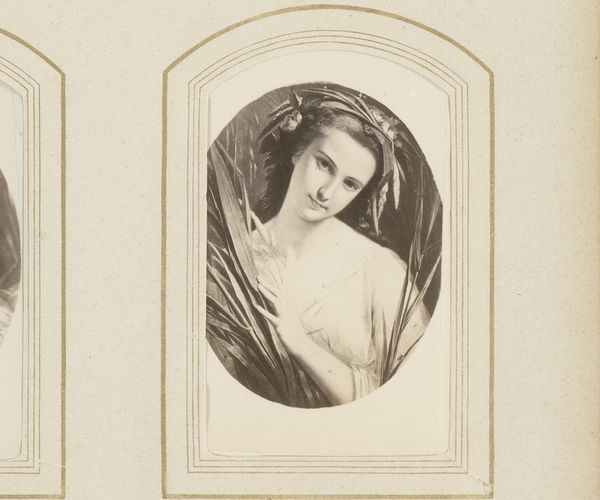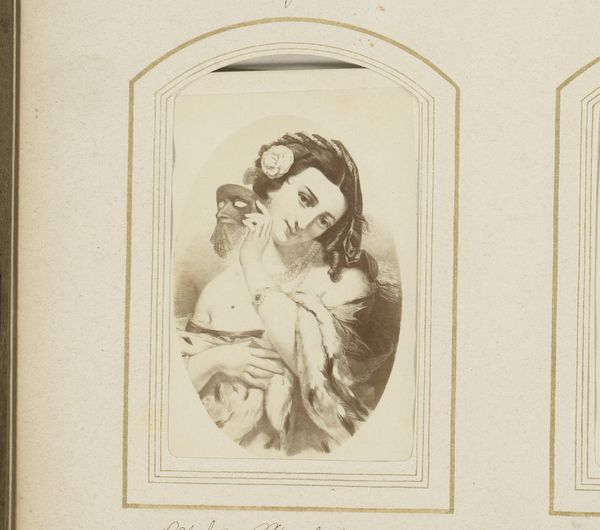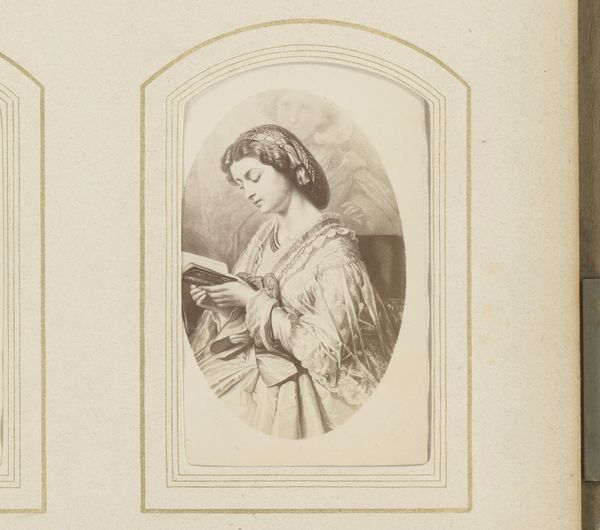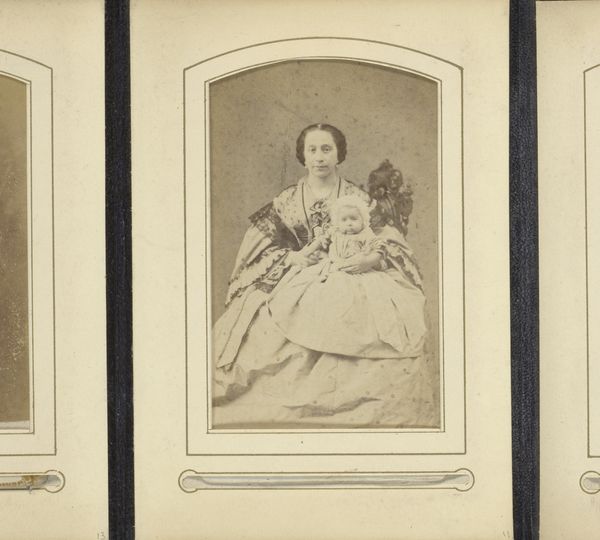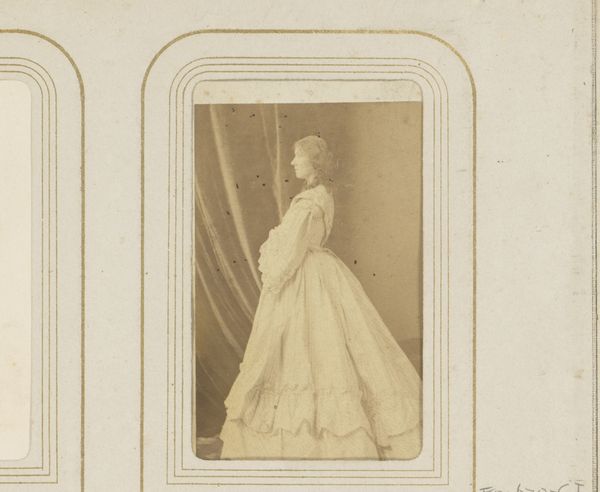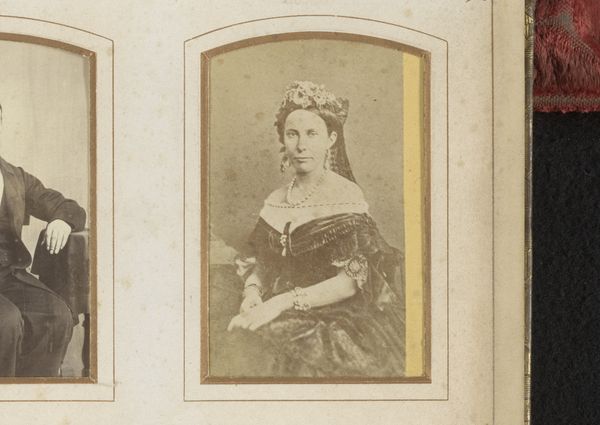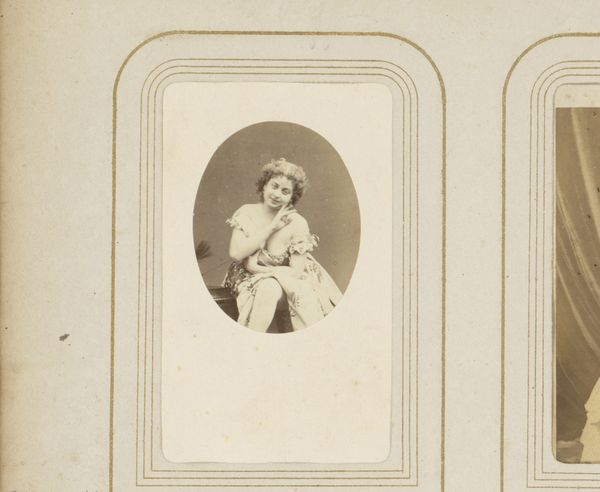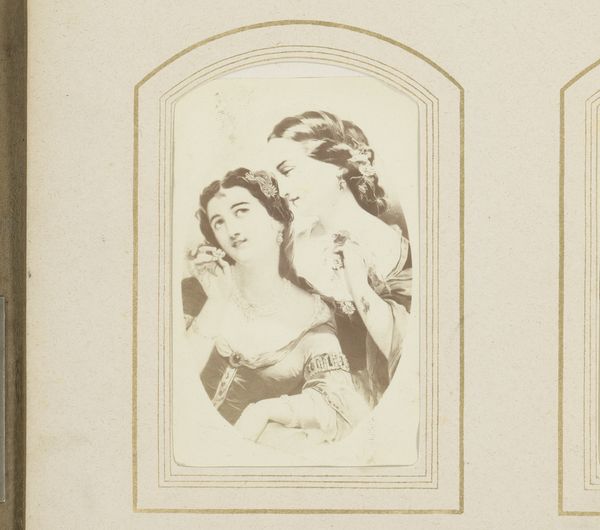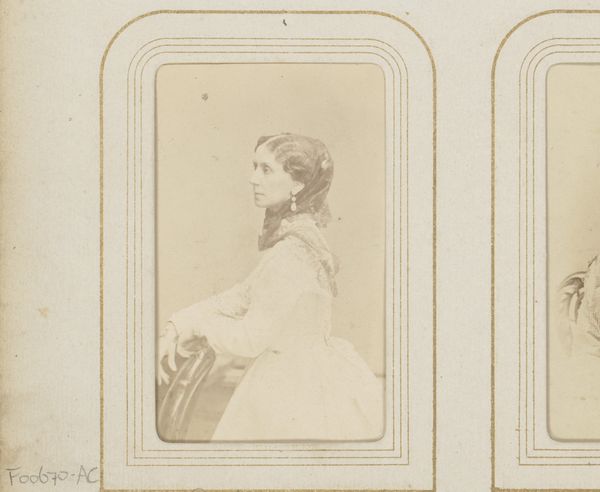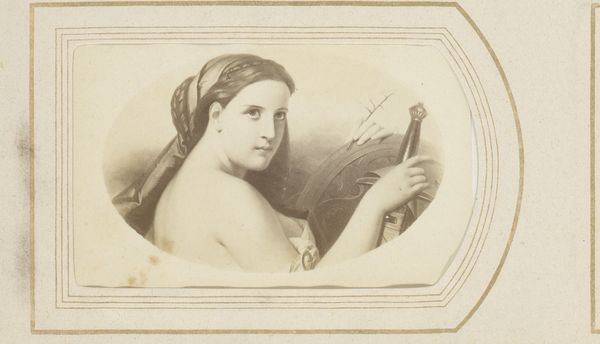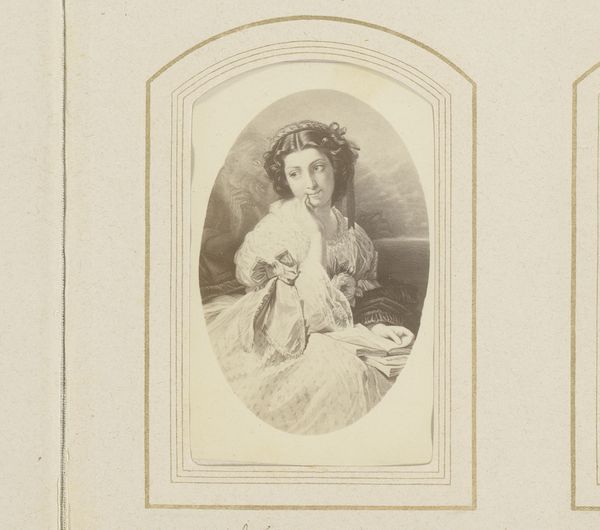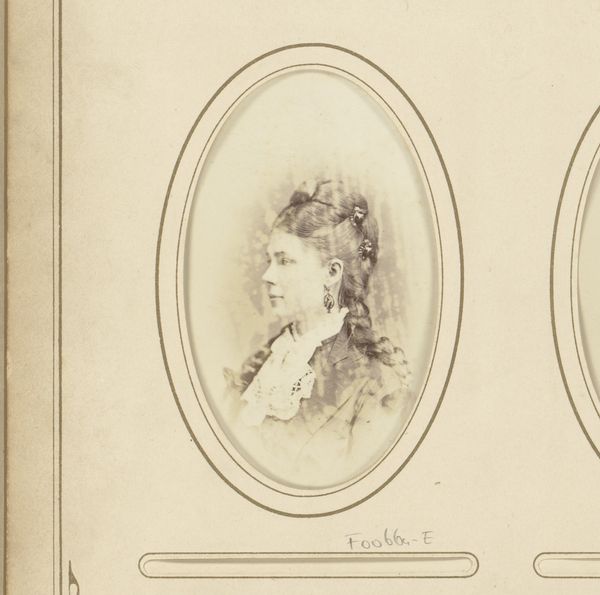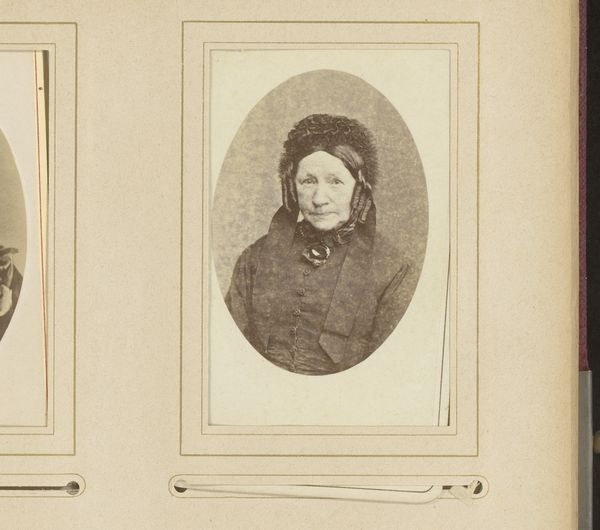
Dimensions: height 84 mm, width 51 mm
Copyright: Rijks Museum: Open Domain
Curator: Let’s discuss this "Fotoreproductie van Nymphe des eaux," or "Photographic reproduction of Water Nymph," an albumen print likely from the 1870s or 1880s here at the Rijksmuseum. It has such a captivating romantic allure. Editor: It certainly does. I'm struck by the gentle gradation of tones, from the deep shadows behind her head to the almost luminous highlights on her skin. It gives the subject a real ethereal quality. Curator: The image fits within the 19th-century obsession with both classical mythology and the burgeoning medium of photography. These photographic societies played an outsized role in the legitimation of photography as an art. Think about what it meant for female figures to be circulated and commodified in carte de visites, in books, in display albums in domestic parlors. Editor: Yes, I can see that tension. The soft focus, the way the water is suggested but not explicitly rendered—it all points to an idealized, rather artificial construct. Semiotically, her gesture and averted gaze indicate chastity, almost saintly piety, yet we can't ignore the presentation of the unclothed body as spectacle. Curator: Absolutely. Nudity within these images can be highly charged depending on its distribution and circulation. The "Water Nymph" participates in a visual language of display intended to portray "feminine virtue," or "classical virtue," for an implicit male audience. Editor: Looking at the composition, there is a certain imbalance between the dark upper register dominated by her hair and wreath, and the lower register which emphasizes negative space, framing her torso like a classical bust emerging from the aqueous depths. That is certainly drawing my attention. Curator: Her direct placement against what might otherwise appear as negative space reflects conventions and tensions between the access to new photographic and reproduction techniques. It is very common in mass imagery. It gives me cause to consider the role of women in its distribution in order to reach an increasingly commercial consumer demographic. Editor: These types of dialogues certainly show us how many factors influence our appreciation of art! I think considering that tension between historical context and aesthetic feeling creates an illuminating way to interpret the image. Curator: I agree. Considering the socio-historical context enriches what might be easy to casually pass off as just another “pretty picture.”
Comments
No comments
Be the first to comment and join the conversation on the ultimate creative platform.
